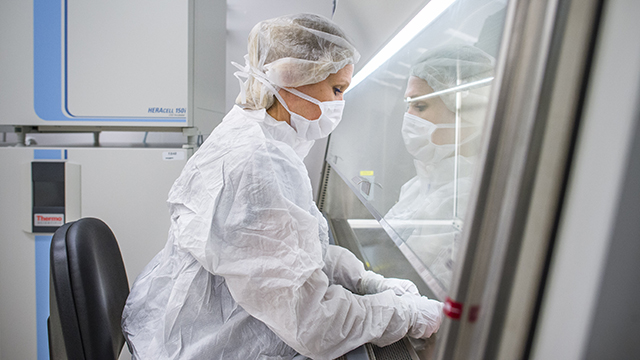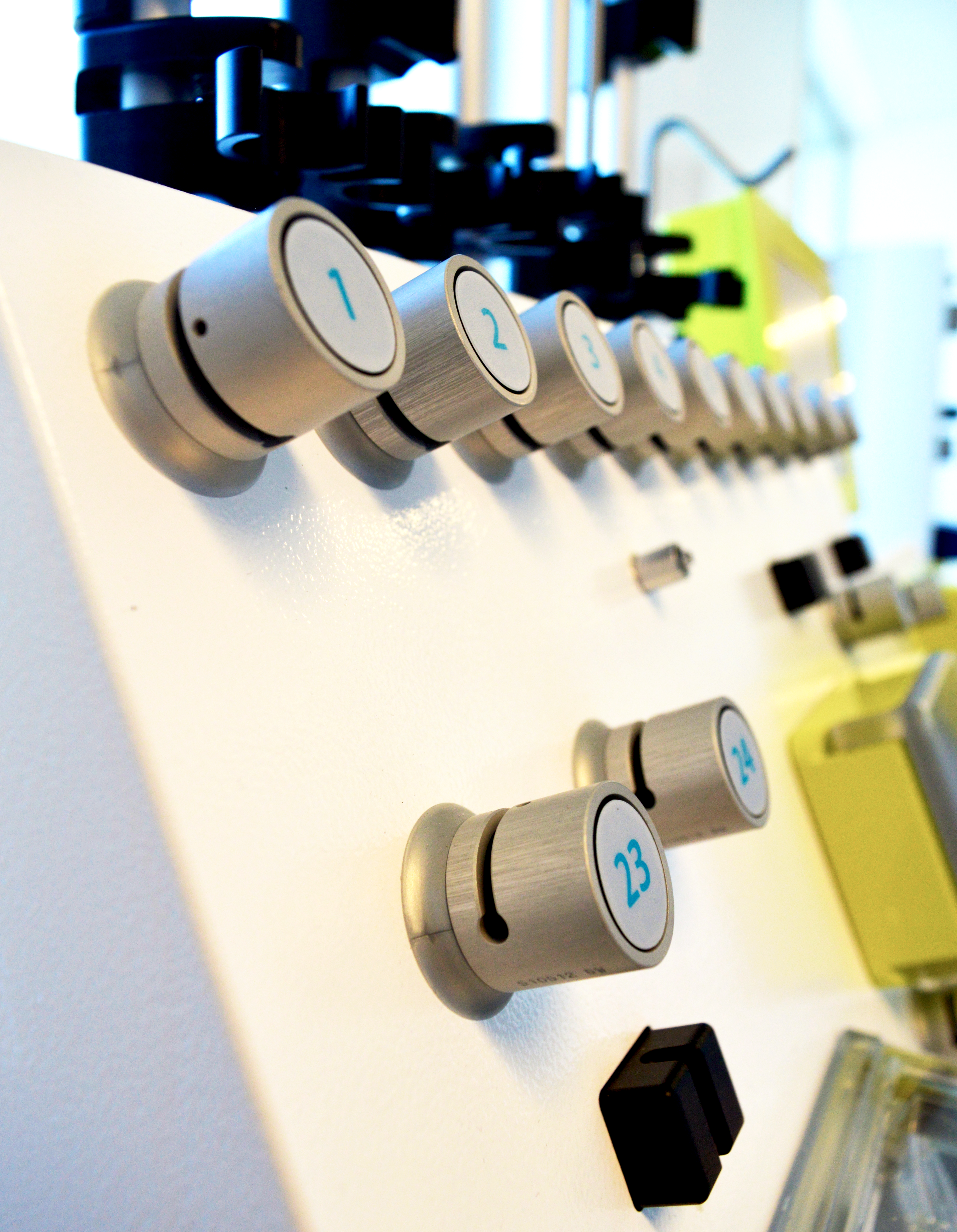
Inside the ACTM
Cell therapies are the next frontier in health research and have the possibility to transform the treatment of many diseases. From cancer to diabetes, cell therapies promise a better future for patients. A new facility at the University of Alberta will help make these treatments a reality for Albertans.
Housed within the Li Ka Shing Health Centre for Innovation, the newly-operating Alberta Cell Therapy Manufacturing (ACTM) facility was designed to take cells and manipulate them into new forms of clinical treatment. It is the only facility of its kind in Western Canada.
 Cell therapies are treatments where patients receive cellular material. This can be a patient's own modified cells, or cells that have been generated in a lab from pre-existing cells. While modification of cells in a lab is not new, its application in patients is a new emerging field in medicine. Gayle Piat, ACTM manager, notes that while this sort of basic research is happening in labs on campus, it's difficult to progress to the clinical trial phase. In order to test the cell therapies in humans and see if they're safe and effective, they have to be produced in a facility like the ACTM.
Cell therapies are treatments where patients receive cellular material. This can be a patient's own modified cells, or cells that have been generated in a lab from pre-existing cells. While modification of cells in a lab is not new, its application in patients is a new emerging field in medicine. Gayle Piat, ACTM manager, notes that while this sort of basic research is happening in labs on campus, it's difficult to progress to the clinical trial phase. In order to test the cell therapies in humans and see if they're safe and effective, they have to be produced in a facility like the ACTM.
"It's like a bridge to get those cells that have been used in research for a long time and get them closer to being used in clinical practice," says Piat.
Medical researchers need this facility to take basic research in cell therapies and move them into the patient. The facility is required because it's a cleanroom laboratory, which ensures the cells are produced in a sterile environment, so they won't become contaminated. Additionally, cell therapies must be manufactured under very rigorous quality control measures called Good Manufacturing Practice.
Having this facility in Edmonton allows the city to further its reputation as a centre for health research innovation. The ACTM allows researchers to do their work more quickly, avoid the high costs of outsourcing cell manufacturing to far away labs, allows them to have more oversight and keeps production of products close to the patients that need treatment. It is a fee-for-service facility, so it can be used by industry as well as researchers. The facility also offers a great opportunity for training and new-skill development in cell therapy production and Good Manufacturing Practice.
Greg Korbutt, ACTM's scientific director, believes the facility is poised to play a key role in the new immunotherapies emerging for cancer treatment. Cancer treatment is just one example of one type of disease that can be treated using new therapies.
"Cell therapy is very new, it's only going to grow and grow as the technology advances and having this facility will only help advance these therapies for patients," says Korbutt.
Some therapies that will be produced in the ACTM have the potential to be lifesaving, other therapies will greatly improve the quality of life and possibly extend the life of a patient. U of A researchers are looking at using the facility to generate cartilage for knee repair, reduce the need for immunosuppressive drugs after organ transplants and improve upon existing islet cell transplants for diabetes patients.
More about ACTM
Alberta Cell Therapy Manufacturing (ACTM) is a $26M regenerative medicine and cell therapy facility, funded in part by the University of Alberta with support from the federal and provincial governments. The two levels of government provided $10.6M in funding each, and the University of Alberta contributed $4.8M. The facility is one of five sites of its kind in Canada and the only one in Western Canada. More information is available at www.actm.ualberta.ca/.